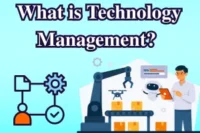The Importance of Personalization in Email Marketing
Published: 24/Feb/2025
Email marketing remains one of the most effective tools in a digital marketer’s toolkit. But with overflowing inboxes and countless promotional emails flooding consumers daily, how do brands stand out? The answer lies in personalization in email marketing. By tailoring email campaigns to individual interests and behaviors, businesses can engage customers like never before, improve conversions, and build lasting loyalty.

If you’re a web developer, SEO specialist, business owner, digital marketer, or simply curious about mastering email strategies, this guide is for you. We’ll analyze why and how personalization plays a key role in email marketing success, explore real-world examples, and provide actionable insights for your campaigns.
Why Email Marketing Matters
Before we dive into personalization in email marketing, let’s address the fundamentals of email marketing and its many benefits for businesses.
What is the Use of Email Marketing?
Email marketing involves sending targeted messages directly to an audience’s inbox. Its primary purposes include nurturing leads, building relationships with customers, promoting products or services, and driving sales. It’s highly measurable, cost-effective, and offers businesses direct access to engage their target audience.
- High ROI: Research shows that email marketing delivers an average return on investment (ROI) of $36 for every $1 spent.
- Direct Communication: Emails land directly in customers’ inboxes, bypassing the noise of social media algorithms.
- Personal Touch: Unlike impersonal ads, email marketing allows you to craft messages tailored to individual preferences.
Now that we’ve outlined why email marketing is crucial, let’s explore why personalization is the secret ingredient to unlocking its full potential.
Why Personalization Is Important in Email Marketing
Generic, one-size-fits-all emails are a thing of the past. Today, customers expect brands to understand and cater to their needs. Here’s why personalization is a game changer in email marketing.
1. Enhanced Customer Engagement
Personalized emails grab attention. Simple touches like including the recipient’s first name in the subject line or recommending products based on their preferences add a human element, making the email feel more relevant and engaging.
Example: A campaign tailored to customer purchase history saw a 20% higher open rate, proving that personalized content holds more appeal.
2. Improved Conversion Rates
When customers receive emails that resonate with their interests, they’re more likely to click and convert. By delivering content or offers that match individual preferences, personalization directly influences buying behavior.
Case Study: A local e-commerce brand increased sales by 30% by incorporating personalized product recommendations in their emails.
3. Increased Customer Loyalty
Personalization isn’t just about boosting sales; it’s about creating meaningful connections. When brands demonstrate an understanding of their audience, it fosters trust and loyalty. Loyal customers are likelier to choose your brand over competitors and may even become advocates.
Example: Automating personalized birthday emails with tools like Mailchimp further strengthens the bond, especially when paired with special discounts or offers.
4. Data-Driven Optimization
The beauty of digital marketing lies in its measureability. You can analyze customer behaviors, interpret data trends, and refine strategies to improve personalization efforts continuously.
Tip: Use insights like open rates, click-through rates, and past purchases to perfect your future email campaigns.
How to Implement Personalization in Email Marketing
While the concept of personalization sounds exciting, executing it effectively requires a strategic approach. Here’s how to get started.
1. Segmentation Strategies
To create personalized emails, you first need to divide your audience into smaller, meaningful segments based on shared characteristics. Here are some key segmentation methods to consider:
- Demographics: age, gender, location, and income.
- Behavior: browsing habits, shopping frequency, and purchase history.
- Engagement Level: Active subscribers vs. dormant ones.
- Preferences: Interests gathered from surveys or signup forms.
Example: Segmenting an audience by demographics resulted in a 25% increase in click-through rates.
2. Craft Tailored Content and Offers
Once you’ve segmented your audience, create email content that speaks directly to each group’s needs and interests. For instance, send first-time customers a welcome discount while introducing loyal customers to new arrivals or early access deals.
3. Leverage Automation Tools
Automation tools make personalization scalable. Platforms like Mailchimp, HubSpot, and ACTIVE Campaign allow marketers to customize emails, schedule them, and automatically adjust content based on user actions, without endless manual labor.
Case Study: A SaaS company using Active Campaign saw 40% improved user engagement with personalized onboarding emails.
4. Include Tasting Notes or Unique Add-Ons
Just like a well-curated cup of coffee includes tasting notes, your emails should include value-adding elements. Offer something personalized, such as product recommendations based on past purchases or a “top picks” list for each customer.
Real-World Examples of Success
Here are some notable examples of brands achieving significant results with personalization in email marketing:
- Targeted birthday campaigns: Using Mailchimp’s automation, a retailer sent personalized birthday emails with special offers, increasing engagement by 15%.
- Product recommendations: An online store analyzed browsing data to recommend complementary products, driving a 30% sales boost.
- Custom Onboarding Emails: A SaaS company customized onboarding instructions to match user behavior, leading to greater retention rates.
These examples show how personalization not only enhances the customer experience but also drives measurable business outcomes.
Tools to Perfect Personalization
To implement effective personalization, you’ll need the right tools. Here are the three top platforms to consider:
- Mailchimp: For basic automation tasks and email templates.
- HubSpot offers advanced customer segmentation and CRM integration.
- ACTIVE Campaign: Ideal for behavior-based email customization and detailed analytics.
These tools streamline operations and make personalization strategies achievable, even for small businesses.
Start Personalizing Your Emails Today
Personalized email marketing is no longer optional; it’s essential for businesses seeking to thrive in competitive digital landscapes. By taking the time to understand your audience, segment your lists, and leverage automation tools, you’ll craft campaigns that not only perform but also inspire.
Want to see how personalization can transform your email marketing efforts? Start with tools like Mailchimp or ActiveCampaign and begin building relationships that last.
The future of email marketing is personal; it starts with your next campaign.
FAQs About Email Personalization
1. Why is personalization important in email marketing?
Personalization enhances customer engagement, drives conversions, and builds stronger relationships by delivering content tailored to recipients’ needs.
2. How can I personalize my emails?
Use audience segmentation, including recipient names, recommend products based on past purchases, and leverage automation tools like Mailchimp.
3. Does personalized email marketing increase ROI?
Yes, research shows that personalized emails lead to higher open rates, click-through rates, and sales.
4. What tools should I use for email personalization?
Popular options include MailChimp, HubSpot, and ActiveCampaign for segmentation, automation, and customization.
5. How can I measure the success of email personalization?
Track metrics like open rates, click-through rates, conversion rates, and overall revenue from email campaigns.
6. Is personalization only for large businesses?
Not at all! Even small businesses can implement effective personalization in email marketing using affordable tools and simple strategies like segmenting by customer preferences.
You may like this post!
How to build a strong online reputation with digital PR





